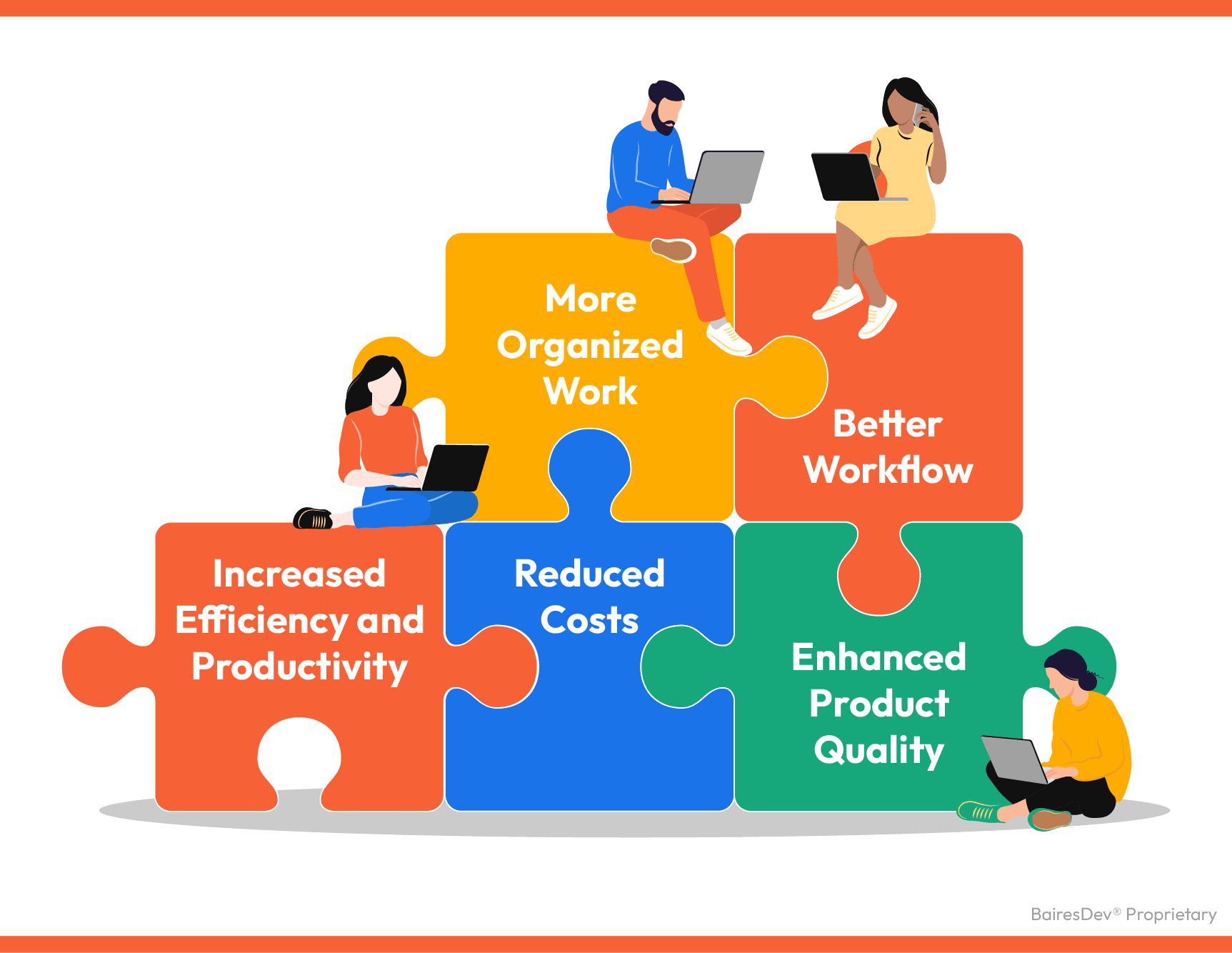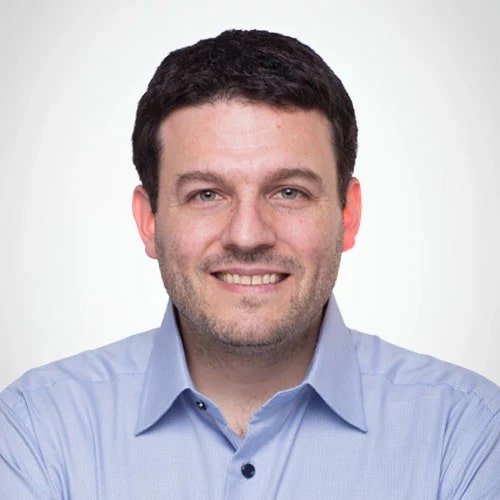Ignoring good coding practices can lead to subpar software that can break at any moment, offer lesser performance, or be hard to update. And we certainly don’t want anything like that to happen.
If you have ever been around developers, you’ve surely heard disaster stories and insider jokes about bad coding practices. This might make you feel that lousy code is imminent and that, if you get into development, you will come across bad practices sooner or later. However, that doesn’t have to be the case.
As those very same developers could tell you, software development has a series of coding standards and practices that most of them are undoubtedly familiar with. They are included in software development courses, shared in development teams, or even learned in the wild. The main problem is that they aren’t standardized or formally formulated – they are tricks of the trade that developers are encouraged to follow in order to write good code.
The other problem is that too many of them don’t always follow these practices. For these developers, the only worry is having the final product working as intended, even if it means leaving out comments or bypassing peer reviews. In other words, the coding process only involves writing code that is passable – not writing good code. However, as we have underscored, ignoring best practices can lead to subpar software that can break at any moment, offer lesser performance, or be hard to update.
That’s why following good practices and coding guidelines is so important. They serve as standards to follow throughout the development to improve the final quality of the code. By adhering to them, software developers and development teams can get products working while also providing those products with better performance and more robust foundations for updating and upgrading them.
That’s also why I thought it would be nice to revisit some key practices that we at BairesDev follow to ensure the quality of our code and products.
Why You Should Use Best Coding Practices
Using good practice feels like an intuitive thing – if it’s something good, then you should definitely use it, right? Unfortunately, my experience has proven to me that that isn’t necessarily the case in the software development world. As I pointed out before, many software developers sacrifice some of these practices in order to meet deadlines or decrease the workload.
However, the short-term gains a software developer can attain from ignoring coding best practices pale before the benefits those developers could be getting if they actually were to adhere to them. Just some of those benefits include:

Let’s take a closer look at the main advantages of writing good code.
Better Workflow
Following good practices streamlines all development processes because the whole team is on the same page about the work they are doing. Teams that follow these established best practices have better communication, understand one other’s roles, and are better equipped to prioritize the work, making the whole life cycle run much more smoothly.
Increased Efficiency and Productivity
When an entire team is following solid coding practices, everyone has a better overall understanding of the project, which leads to fewer instances of a software glitch or error and a reduced need for constant fixes. That maximizes the efficiency of everything developers code, which ultimately translates into a boost in productivity.
Enhanced Product Quality
Peer reviews and code comments allow teams to identify bugs and problems earlier on, which allows them to work on fixes before the product goes to production. That means there will be fewer issues down the line, which will ultimately translate into more efficient code, better performance, and a more stable product (that ultimately also means more robust software).
More Organized Work
Most development teams use management platforms to track their projects’ progress, but they can go beyond that by using tags. Through them, a team can have a more organized file structure, all linked with the tasks at hand. This makes it easier for developers to find what they have to work on at any given time while also helping them better organize their jobs.
Reduced Costs
All of the above (increased efficiency and productivity, better workflow, and higher product quality) converge into this benefit. That’s because a team that is governed by good practices and coding conventions spends less time fixing things and gets the most out of the time they work on a specific task.
Getting those five benefits should be enough reason to convince any developer or development team to adopt good or best coding practices. Even if developers don’t care about organization or productivity, avoiding the frustration that comes with having to deal with bugs and errors should be enough motivation to follow good practices.
Now that you understand the importance of good coding practices, let’s review a handful of the essential ones.
6 Essential Coding Practices for Any Programming Language
Any seasoned developer might point out that only six practices don’t even begin to cover the spectrum of good practices you should be following. That might be true, but for this article’s purposes, those six practices are enough to lay down a solid foundation through which you can achieve higher code quality. Also, they are great for illustrating how important it is to write code the correct way.
Without further ado, the six essential top coding practices include the following:

#1 Comments
When a developer works on their code, they follow a logic that isn’t always easy to follow by others (or, after some time, even themselves!). This is why commenting code is such a good thing: it provides explanations of code snippets that can come in handy for other developers that need to rework someone else’s code later on.
Comments are simple annotations whose only goal is to make it easier for anyone checking the code to understand exactly what the developer was trying to do. Many developers feel like it is a waste of time to write comments, but that is never, ever the case. Even when comments feel redundant, they can serve a purpose, from reminding the developer of the logic behind a line of code to teaching beginner programmers how to write good code to illuminate the objective behind it.

#2 Peer Review
Another staple of good coding standards, peer review, implies that all the code written by a developer is always reviewed by someone else. This simple step allows developers to pass their work onto a fresh set of eyes that can detect issues with the code more easily and point them out before they become bigger problems.
Peer review should be a standard process in all kinds of projects, but its importance in bigger and more complex projects cannot be understated. If a developer ends up merging a code that wasn’t reviewed, they expose the whole entire project to potentially more significant problems that can ramp up the costs and efforts to fix. That’s why it’s always best to foster collaboration between developers to review each other’s code in the early stages of a project.
#3 Pull Requests
A pull request happens whenever a developer tells the rest of the team about changes they have worked on and are to be pushed to the main repository. You can think of a pull-request system as a warning system in which developers tell one another that there is modified code that needs to be reviewed and discussed before being merged. In a certain sense, pull requests combine comments and peer reviews into one practice, even when they aren’t necessarily the same.

#4 Tags
One of the most neglected practices in all software development, the inclusion of tags is (believe it or not) highly beneficial for the process. That’s because using tags allows developers to quickly identify the different files they work with on a particular project. Thus, they can access them more efficiently while improving their overall organization. Tags can also help identify features, bug fixes, and improvements, which ultimately leads to an index of sorts of all the things covered in a particular project.
#5 Meaningful Naming Conventions
Naming conventions are useful for identifying and distinguishing classes, variables, types, and functions in source code. In order to write strong code for software projects, it’s always a good idea to use descriptive language that defines what the code includes. Any developer should be able to read the names involved in someone else’s code and understand what is contained within it.
This also contributes to better code readability. Additionally, it provides more information to the reader, promotes clarity, and reduces ambiguity.
#6 Don’t Repeat
Repetitive code, also called duplicate code or copy and paste code, is a block of code that occurs multiple times in your codebase. It’s typically a problem that occurs when programmers are working quickly, but it’s also a case of sacrificing quality in order to achieve speed. While it can be useful in some cases, you should aim to keep it to a minimum.
One of the biggest problems with repetitive code is that it can lead to increased technical debt. Additionally, it can make your code more vulnerable to security threats and risks.
Meanwhile, focusing on unique code with minimal duplication leads to better readability, improved testing capacities, and stronger code overall.
Writing Code, The Right Way
At BairesDev, we follow a strict policy of adhering to these and other best coding practices to ensure positive results for all of our projects. The way we see it, these practices are the core of good software development, as they provide higher-quality products that are easier to maintain, update, and upgrade.
Our own experience drives us to be ardent defenders of best coding practices: we have seen their transformative power for software development. And that’s why, though we appreciate a good bad coding joke or story, we always treat good coding practices seriously – and why you should, too.
Best Coding Practices FAQ
What are the benefits of good programming practice?
There are many benefits to good programming practices, including better workflows, increased efficiency and productivity, enhanced product quality, more organized work, reduced costs, and less technical debt.
Why are coding standards are important?
Coding standards are important because they lead to stronger, more stable projects and products that have fewer vulnerabilities and require less maintenance in the long term. One of the biggest risks of ignoring coding practices, in contrast, is that while it can mean quicker project turnaround, it will lead to longer-term problems like excessive technical debt and vulnerable projects.
How can I learn good coding practices?
Beginner programmers and seasoned programmers alike should take the time to learn coding conventions. In order to learn good coding practices, you can discuss code with other programmers, such as ones on your team or in large online communities, study other developers’ projects, and read up on coding best practices.






